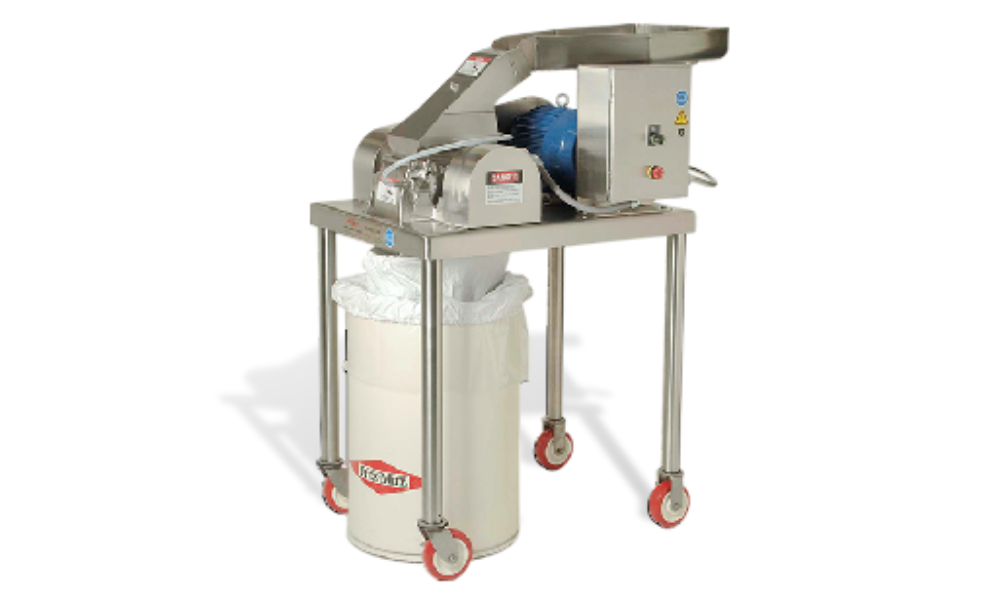Particle size reduction is a vital and indispensable aspect in the realm of pharmacy, exerting a profound influence on the effectiveness, safety, and stability of pharmaceutical formulations. By diminishing the size of drug particles, a plethora of advantages can be unlocked, including heightened drug dissolution, amplified bioavailability, and enhanced control over formulation attributes. In this comprehensive blog, we will delve into the significance of particle size reduction in the pharmaceutical field and unravel its profound implications for the intricate processes of drug development and manufacturing.
Why Particle Size Reduction Matters in Pharmacy
Enhanced Drug Dissolution: One of the key advantages of particle size reduction is improved drug dissolution. By reducing the particle size, the surface area of the drug increases, allowing for faster and more efficient dissolution when administered. This is particularly crucial for drugs with poor solubility, as smaller particles can significantly enhance their bioavailability and therapeutic effect.
Improved Bioavailability: Particle size reduction plays a vital role in increasing the bioavailability of orally administered drugs. Smaller particle sizes enable better absorption through the gastrointestinal tract, leading to higher drug concentrations in the bloodstream. This allows for lower doses to achieve the desired therapeutic effect, reducing the risk of side effects and improving patient compliance.
Enhanced Formulation Uniformity: Particle size reduction facilitates better control over formulation characteristics, including uniformity and homogeneity. This is crucial in the manufacturing of solid dosage forms, where the uniformity of drug particles ensures consistent drug release profiles and dosing accuracy. This is particularly relevant for tablets, capsules, and powders.
Optimal Physical Properties: Particle size reduction can influence the physical properties of pharmaceutical formulations, such as flowability, compressibility, and stability. Fine particles exhibit improved flow characteristics, enabling efficient processing during manufacturing. Moreover, smaller particles can lead to better compressibility, resulting in tablets with adequate hardness and disintegration properties.
Methods of Particle Size Reduction
Milling: Milling is a commonly used method for particle size reduction in pharmacy. It involves the mechanical breakdown of particles through processes such as impact, compression, and attrition. Various milling techniques, such as ball milling, jet milling, and hammer milling, can be employed depending on the specific drug and desired particle size range.
Micronization: Micronization is a specialised technique that produces particles in the micron range (1-10 μm). It involves reducing the size of particles through high-energy processes, such as fluid energy milling or air jet milling. Micronization is particularly beneficial for drugs with low solubility and high potency, as it enhances their bioavailability and enables precise dosage control.
Dry Granulation: Dry granulation is a particle size reduction method used for drugs that are sensitive to moisture or heat. This process involves compacting powder blends between two counter-rotating rolls, followed by milling or sieving to achieve the desired particle size distribution. Dry granulation is a preferred technique for producing granules that can be further compressed into tablets.
Roll Compactor: In addition to milling, micronization, and dry granulation techniques, another important method employed for particle size reduction in the pharmaceutical industry is the use of a roll compactor. A roll compactor, such as those offered by Fitzpatrick, is a specialised equipment designed to compact and densify powders or granules into uniform sheets or ribbons. The compacted material is then processed further, such as through milling or granulation, to achieve the desired particle size distribution.
Conclusion
The significance of particle size reduction in the pharmaceutical industry cannot be overstated. It plays a pivotal role in optimising drug performance, ensuring formulation uniformity, and ultimately improving patient outcomes. Through the utilisation of techniques like milling, micronization, dry granulation, and roll compaction, pharmaceutical manufacturers gain the ability to precisely control and manipulate particle size, thereby enhancing drug dissolution, maximising bioavailability, and guaranteeing consistent and effective dosage forms.
The market outlook for particle size reduction in the pharmacy industry is highly promising. With the growing emphasis on drug efficacy and patient safety, there is an increasing demand for pharmaceutical formulations with optimized particle size distributions. The market is driven by the need for enhanced drug performance, improved bioavailability, and consistent dosage forms. As pharmaceutical companies continue to invest in advanced particle size reduction technologies and equipment, the market is expected to experience steady growth, providing opportunities for innovation and development in this field.
In this context, brands such as Fitzpatrick stand out as key contributors to the pharmaceutical landscape. With their expertise in particle size reduction technology and equipment, Fitzpatrick offers invaluable solutions to the industry. Their cutting-edge machinery and innovative approaches empower pharmaceutical manufacturers to meet the stringent requirements of particle size reduction, paving the way for the development of high-quality, efficacious, and safe drug products. Fitzpatrick’s commitment to excellence and dedication to advancing pharmaceutical manufacturing make them a trusted partner for pharmaceutical companies seeking to optimise their processes and deliver superior medications to patients worldwide.
By recognising the importance of particle size reduction and partnering with brands like Fitzpatrick, the pharmaceutical industry can continue to push the boundaries of drug development, formulation, and manufacturing, ultimately improving patient care and making significant strides in healthcare advancements.
